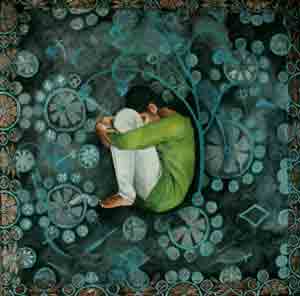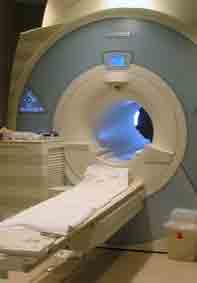|
Claustrophobia and SophrologyReducing the anxiety of a MRI scan through Sophrology

Roughly five percent of the world population suffers from claustrophobia (fear of small spaces), yet it is estimated that ten percent of people who undergo a MRI (Magnetic Resonance Imaging) scan displays signs of extreme anxiety. It is hardly surprising, as an MRI scan is a fairly stressful experience. Being pushed into a narrow tunnel, with an instruction to lie still, is no walk in the park. If you suffer from severe claustrophobia, it might seem like your worst nightmare becoming reality. What is an MRI Scan?
An MRI scan is probably the most effective way to diagnose soft tissue injuries and diseases in the human body. The tunnel-like scanner uses a very powerful magnetic field as well as radio frequency pulses in order to create images of soft tissue, blood vessels and internal organs. Unlike X-rays, that use ionizing rays, an MRI scan has virtually no negative physical effect on the patient undergoing the procedure. Due to the strong magnetic field, it is important to remove any metal on clothing and person. Technicians usually advise patients to wear a hospital gown and it is recommended that you leave any jewelry at home. It is vital that a patient with a pacemaker, implant, screws or internal prosthesis inform the technician prior to the MRI as this may interfere with the magnetic field, resulting in distorted images. Surprisingly enough, women are also advised to remove make-up as some contains traces of metal that may also interfere in the procedure. MRI Scan Anxiety Stems from ClaustrophobiaAn MRI scan for severely claustrophobic and obese people have become difficult and, in order to accommodate them, some new hospitals and clinics have started using an ‘open’ MRI scanner, where part of the machine moves around the body and there is little to no confined spaces to induce claustrophobia. Due to the high cost of replacing older machines, not many of the ‘open’ MRI scanners can be found at hospitals as yet. In some cases, you are provided with earplugs or even earphones so that you may listen to some music in an attempt to reduce the noise from the scanner during the procedure, but this does little for your anxiety. Preparing for an MRI occasionally involves being injected with a contrast dye in order for the images to be clearer. Your body is therefore subjected to a high dose of chemicals from the dye in addition to the high stress levels. It is only natural then to want to use an alternative, non-invasive, non-medicinal method to reduce the anxiety associated with MRI scans. Using Sophrology to Reduce AnxietyFor a number of years now, Swiss hospitals and clinics have successfully used Sophrology to combat claustrophobia during MRI scans and prepare patients for the procedure. Using Sophrology’s relaxation method, mastering of breathing and taking stock of the body before a MRI scan, you can control your body’s response and this, in turn, reduces the stress generated by the procedure. Depending on the severity of the claustrophobia, most people require only two sessions with a Sophrologist prior to the scan. The patient is usually also provided with a CD containing the exercises to practice at home for a few days prior to the MRI. At the request of the patient, the Sophrologist may also be allowed to accompany the patient and guide them through a sophrology exercise right before the MRI. Guided by the Sophrologist’s soothing voice, the patient is taken to a place of total relaxation and inner calmness and will be empowered to cope with the anxiety created by the fear of the enclosed space. “When I started to panic, I started doing the exercise and it calmed me down immediately. I was calm for the rest of the scan” says claustrophobic MRI patient, Diane*. Depending on the part of the body that is being scanned, a MRI scan may take between fifteen and forty five minutes. Any movement during the procedure may cause distortions in the images, even erratic and shallow breathing in anxious patients might have some effect. By keeping a claustrophobic or anxious patient calm, the chances of distortion are significantly reduced, eliminating the need to redo any of the images and prolonging the procedure. There is no longer a need to be fearful of the dreaded MRI scan, nor is there a need to suffer the embarrassment of having to ask for a sedative prior to this daunting procedure. If it was able to talk, there is no doubt that your body would thank you for dealing successfully with a stressful situation, without subjecting it to the added stress of digesting a sedative. *Name was changed for anonymity (Sources: Interview with Dorna Wilson-Revie – Master Sophrologist, Geneva, Switzerland, http://www.drugs.com, http://www.radiologyinfo.org, http://www.wrongdiagnosis.com/)
Top of claustrophobia |
Translate this Site
Search This Site
Loading
Subscribe to E-Zine
Support this Site
|
Holiday SpecialsFor Holiday Specials at Amazon, Click Here
|
| |||||





